
The olfactory abilities, or sense of smell, of our canine companions are truly remarkable and we can expand our training skills by learning more about scentwork for dogs. Dogs explore the world with their nose which is estimated to be around 40 times more powerful than that of humans, and they possess up to 300 million olfactory receptors, in comparison to our 6 million. This exceptional ability allows them to interact with their environment in a way that is far beyond our understanding. Through chemical communication, they can gather vital information, detecting and recognising the world around them. Their cold and wet nose, which is extremely sensitive and powerful, serves as an invaluable tool for one of their favourite activities: sniffing.
One great way to engage and enrich our dogs is by tapping into their natural love of sniffing. By incorporating scent-based activities into training, we can provide fun and stimulating mental challenges and training for our dog.
What materials do you need to start scentwork training
When starting out with scentwork for dogs, it’s important to consider the materials you use for the search item. Scent particles can pass through soft materials more easily than solid ones. Therefore, it’s better to begin with an easy scent such as a treat and/or food wrapped in a cloth rather than in a sealed container. This allows the scent to disperse and makes it easier for the scent work to be successful.

Select a suitable container to hold your target sent that can either be hidden where your dog can only smell it but not access it, or be safely held in a container that can be carried in the dog’s mouth. You should ensure that the container cannot be swallowed by your dog, and it should not shed any bits that could be chewed and ingested.
Ensure that the container can securely enclose the scented item while still allowing the scent to permeate easily. Furthermore, the container should not be easily opened to prevent the dog from gaining more frequent access to the scent than intended. Remember to keep things simple. Scentwork for dogs does not have to be expensive or complicated.
A great example of a scent container is a small Tupperware box with holes in it to allow the scent to escape. When placed inside a knotted sock, the holes enable the scent to transfer into the sock or placed inside a toy, where it lingers and forms a concentrated scent pool in the surrounding area. Additionally, this method is comfortable for the dog to hold.
When choosing items for your dog to search for, it’s important to take into account your dog’s natural confidence. Item with stronger smells will be easier for the dog to sniff out, providing a confidence boost.
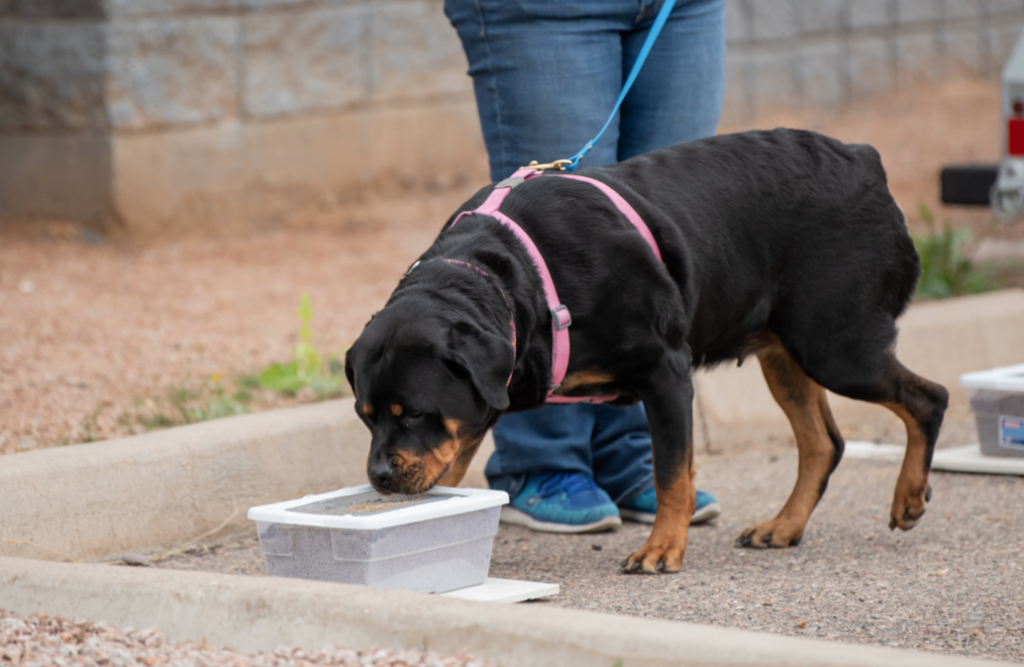
Once you have boosted your dog’s confidence through the use of treats or food in scentwork games and are prepared to move on to the next level, you can begin training your dog to search for a specific target scent. If you are unsure about which scent to use, you can explore: What Scent To Use And What Scent To Avoid.
What is a scent plume or scent pool?

The term “scent pool” refers to the distribution and density of a particular scent as it disperses from its source. When an item is situated in an area with little air movement or wind, the scent emanating from it spreads out uniformly in all directions, creating what is known as a scent pool. This concept is important in understanding how scents behave in still environments and can be valuable in various applications such as search and rescue operations or tracking activities.
When there is air movement in a specific direction, scent particles are carried along with it, forming a cone shape as they travel. The dog’s nose detects these scent particles and allows the dog to locate the source of the scent. This is particularly useful in scent work or search and rescue scenarios, where the dog can follow the pool or cone shape of scent density to locate a hidden item or person. An easy way to visualise a scent plume is to imagine a factory chimney.

This natural ability of dogs to track scents is a fascinating aspect of their olfactory prowess and plays a vital role in various working and training scenarios.
Avoiding confusion when doing scentwork
It’s best to avoid creating confusion when training your dog to learn something new. Recognising signs of confusion during the training process is important to ensure effective learning.
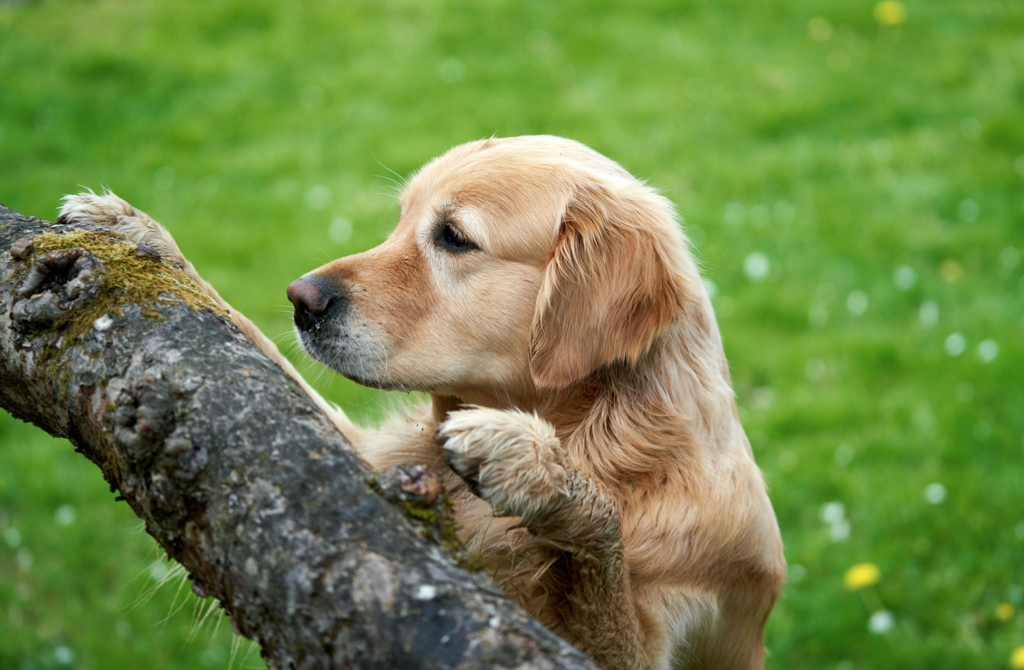
When training your dog with scent work, it’s crucial to deliver instructions in a manner that ensures the dog’s confidence remains high and confusion is kept to a minimum. Even experienced dog trainers can encounter moments where their dogs become confused.
It’s important to be able to recognise when a dog is feeling confused when doing scent work for dogs, as this is essential for effective learning. If confusion is not addressed promptly, it can escalate into stress. Some signs that a dog may be confused include attempting to move away, excessive scratching, picking up toys, and attempting to distract with play.
Keep an eye out for the following signs that may indicate a dog is confused:
• Trying to move away
• Scratching furiously
• Picking up toys
• Trying to distract with play
Recognising and addressing confusion early is essential for creating a positive and productive learning environment for your dog.
If your dog is displaying any of the following behaviours or seems to be behaving unusually, it could be a sign that they are feeling confused or overwhelmed. In such cases, you might be pushing them too hard or expecting too much too soon. It’s important to take a break, help your dog relax and make the exercise easier for your dog to understand. Failing to ensure your dog succeeds in these training exercises can potentially demotivate them and cause them stress or frustration.
Stress resulting from confusion may manifest in various ways, including:
– Yawning
– Lip and nose licking
– Engaging in uncoordinated or inappropriate behaviour
– Excessive panting
– A furrowed brow
To train your dog successfully, it’s important to take the time to ensure that they understand each step of the training process. This involves clear communication and consistent cues to help them grasp what is expected. Building your dog’s confidence is also crucial, and you can do this by making the training sessions enjoyable and rewarding. By incorporating fun elements and positive reinforcement, you can create a positive learning environment for your dog. Always remember to reinforce their good behaviour with their favourite treats or rewards, as this will further motivate and encourage them to continue performing well.
The importance of play reinforcement in dog training to increase your dog’s dopamine
Playing is an incredibly powerful tool for learning, especially for dogs. Not only does playtime make the dog feel good, but it also helps to solidify the memories from the lesson that came before the game. It serves as a form of reinforcement, making the learning experience more meaningful and enjoyable for the dog.
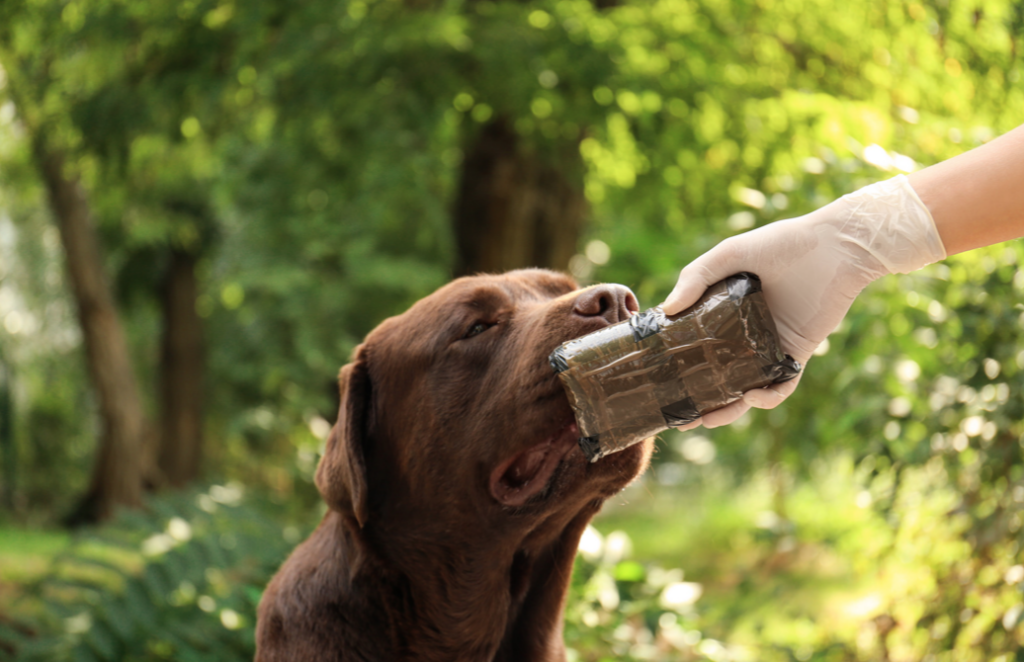
Within the canine brain, there exists a complex interplay of neurotransmitters that significantly influence their emotional state and behaviour. Among these, dopamine stands out as a key player, being closely associated with motivation and memory formation.
Play! Play! Play! Make Scentwork fun
Always end your training session with a good play with your dog. When we engage in play, a surge of dopamine floods their brain, leading to heightened motivation and the rapid establishment of strong memories.
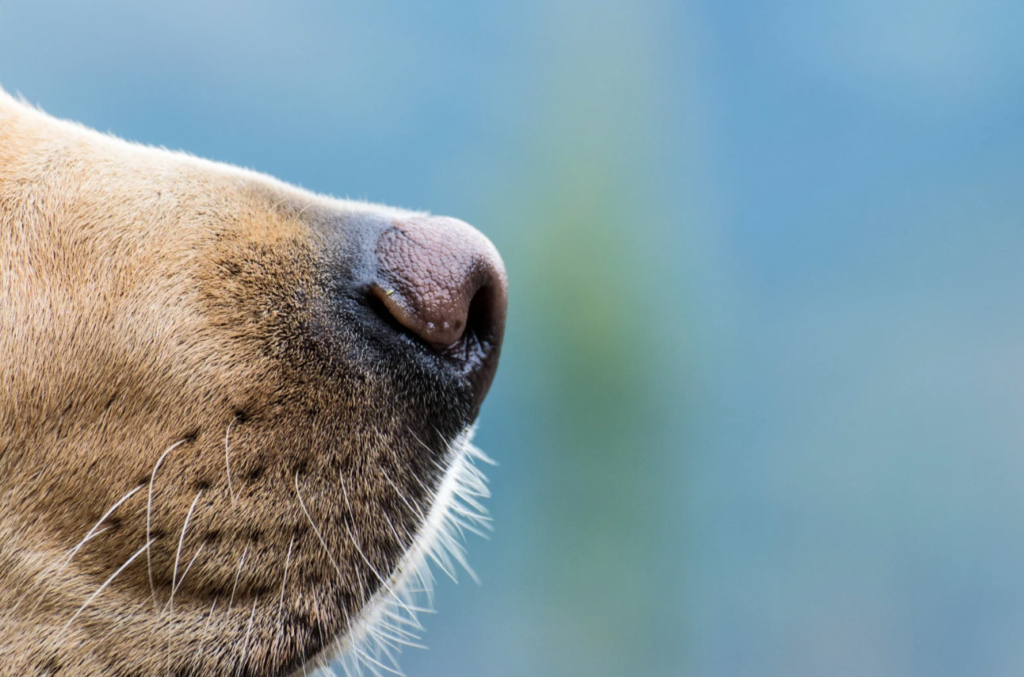
These positive effects of play contribute to their overall well-being, as well as the bond between humans and their canine companions.
Are you ready to give scentwork a try?
Here are five easy scentwork games you can do at home and in the garden.
Disclaimer: The information provided in this blog is for informational purposes only. Read our full Disclaimer.

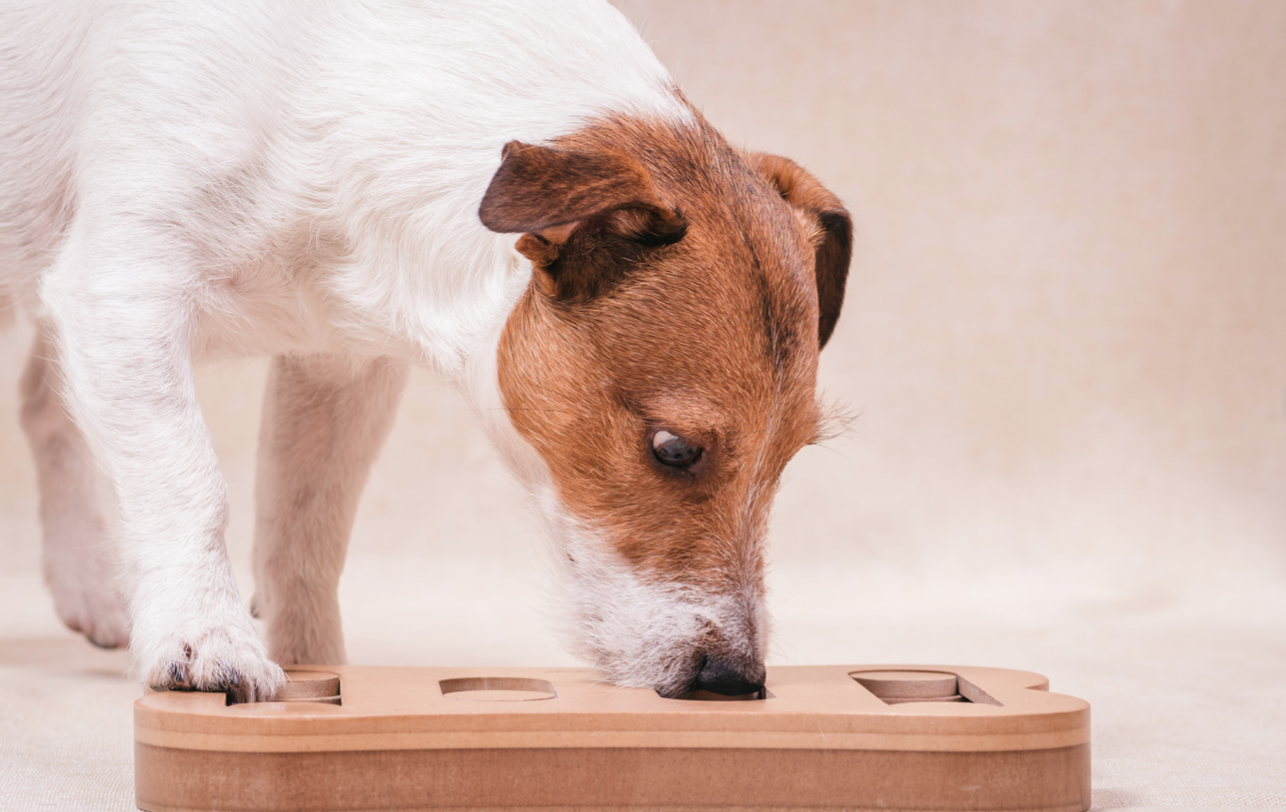


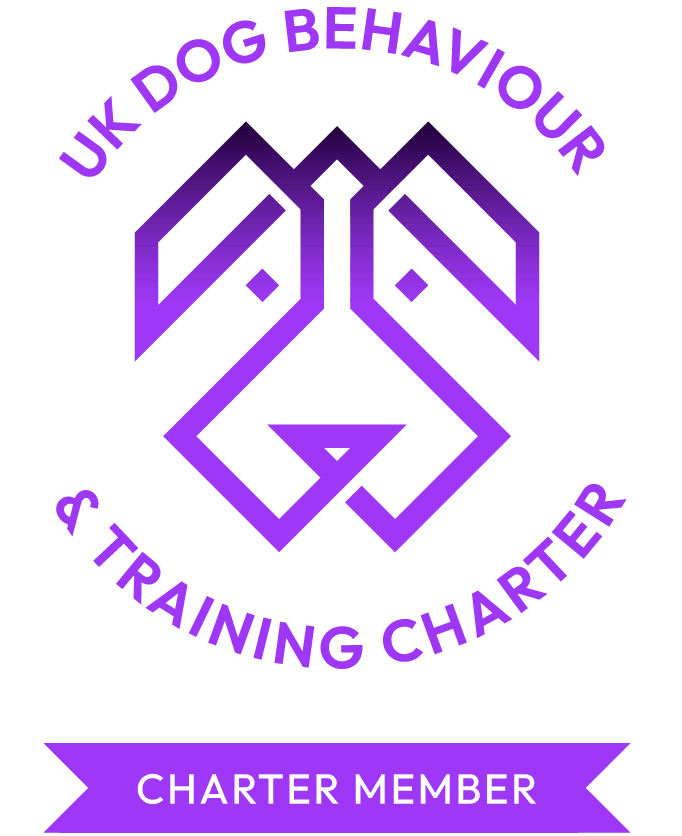
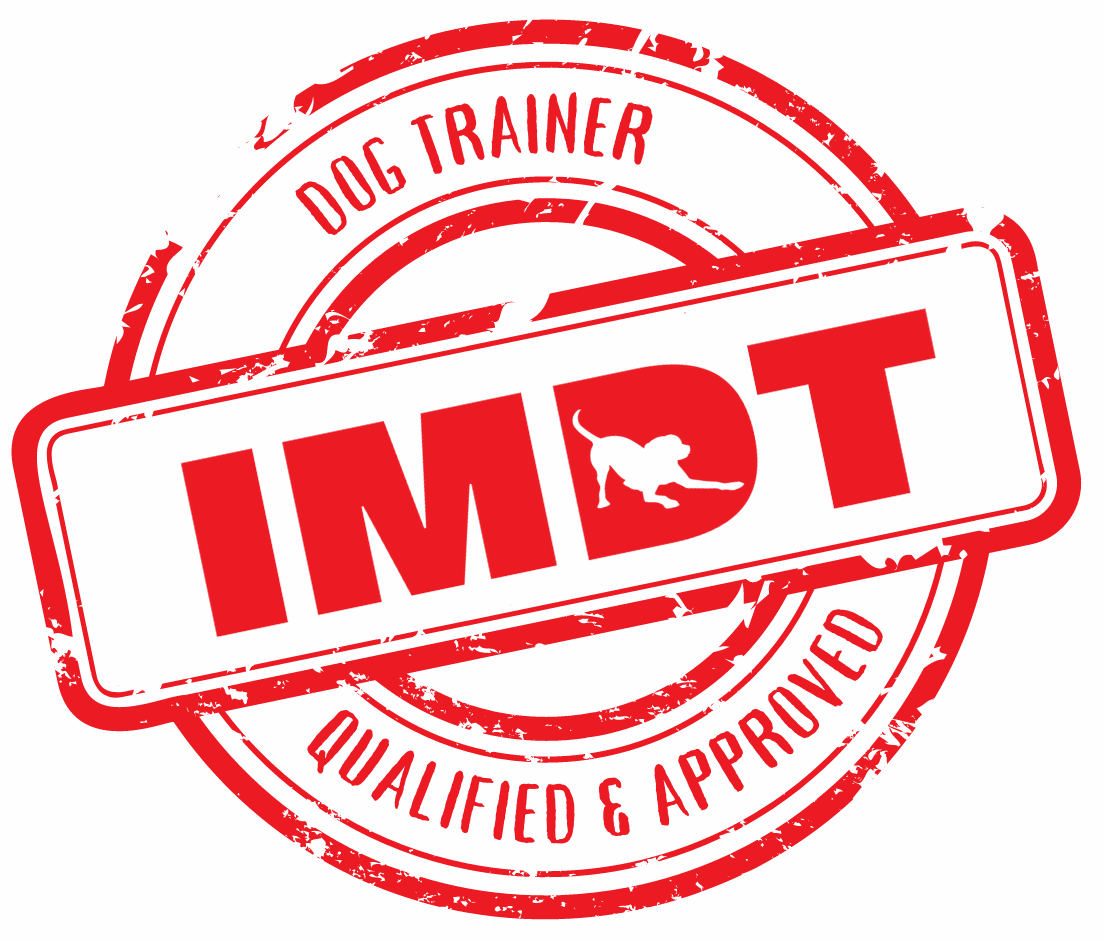
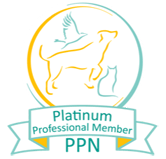
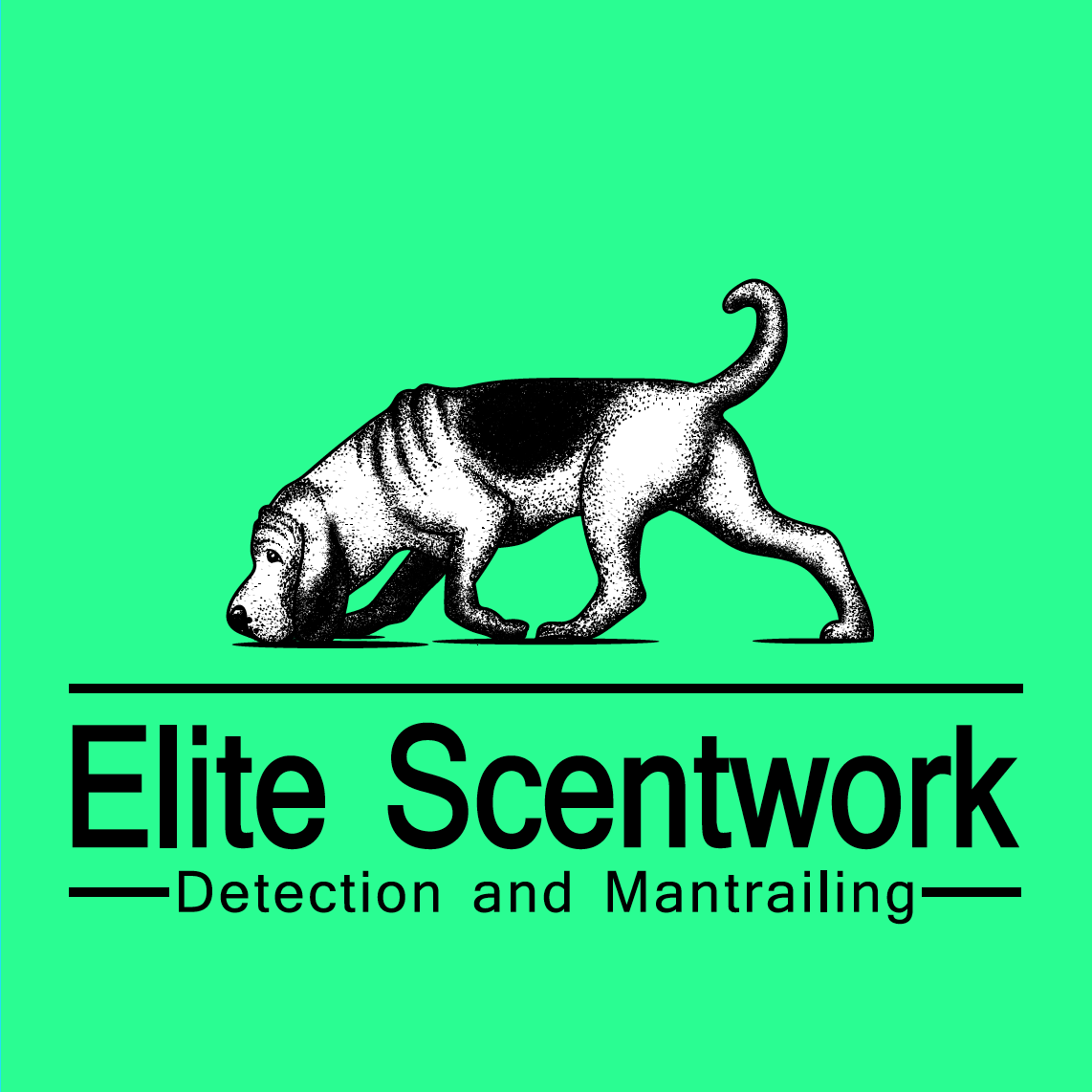
Comments are closed